Deer Eat What?!
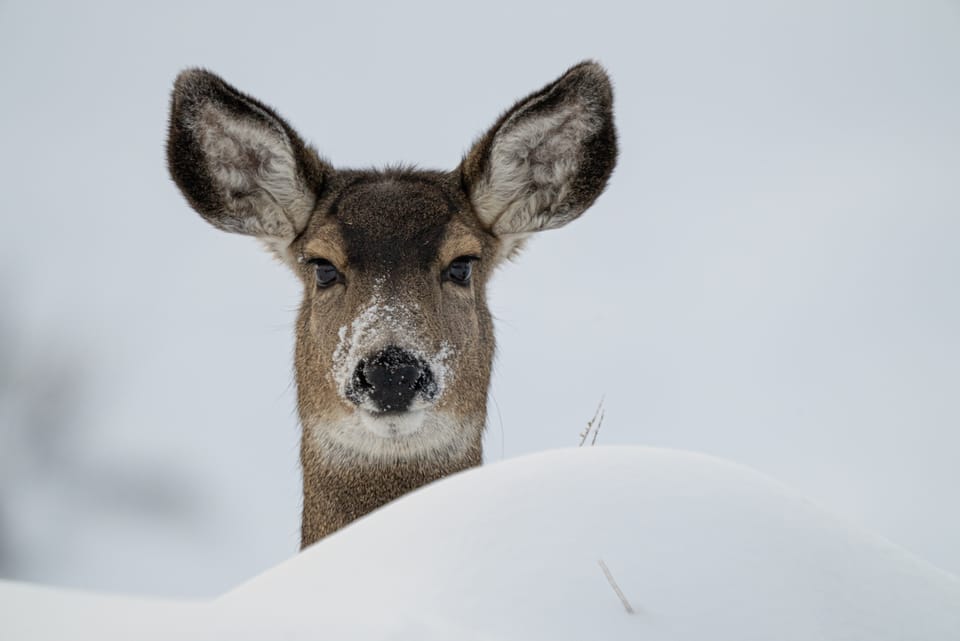
If you have a garden, fruit trees, or ornamental plants in your yard you already know what deer eat—they eat almost every plant that you try to grow, right?!
Deer are in fact "browsers" which means they nibble on a little bit of everything (buds, stems, leaves, small plants), as opposed to "grazers" like horses or sheep, that feed intensively on a single item (grasses).
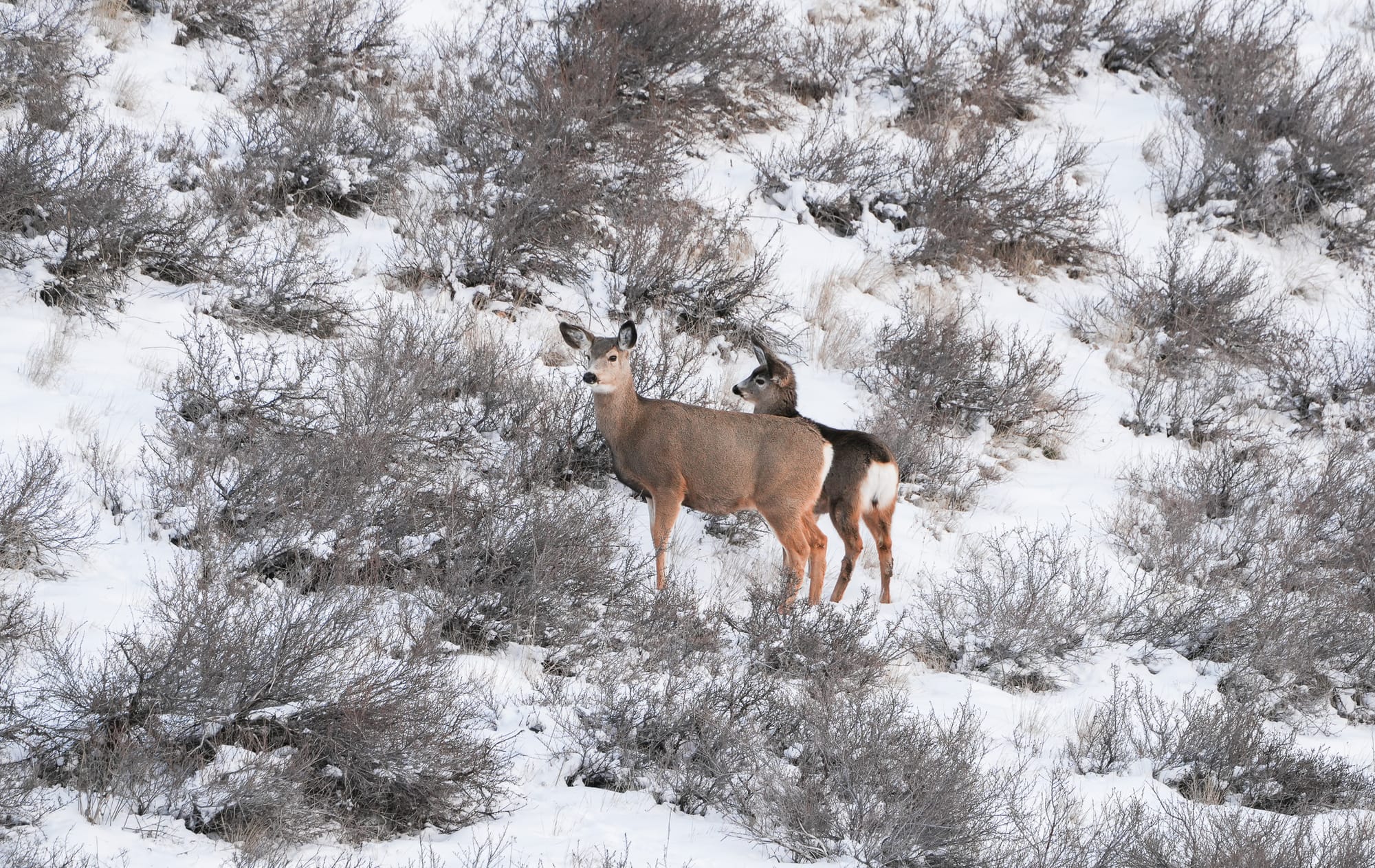
Technically, every animal that eats plants—from the tiniest insect to the largest elephant—is an herbivore. And all herbivores face the same challenge: how to digest plant tissues when they lack the enzymes to break down complex cellulose molecules?
Mammals solve this problem by having modified chambers in their guts which house immense numbers (trillions or quadrillions!) of microbes that specialize on breaking down plant tissues.
These chambers are located either before the stomach (foregut fermentation), or after the stomach (hindgut fermentation). Animals that rely on foregut fermentation, like deer, are also known as "ruminants" because they house microbes in a giant chamber called the rumen located just before the stomach.
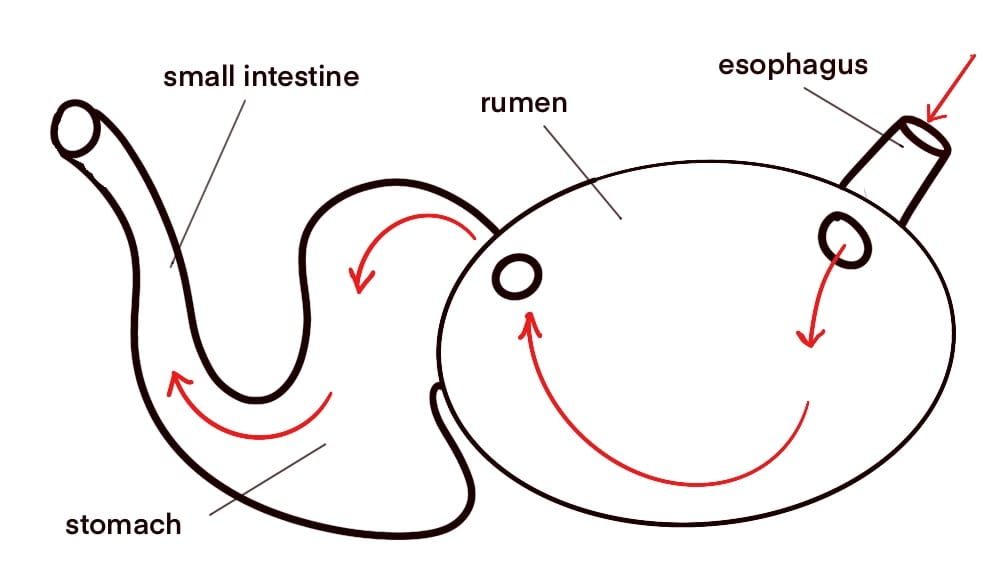
The advantage of foregut fermentation is that a deer is most vulnerable to predators when it has its head down eating plants, so their huge rumen serves as a holding container that allows them to very quickly eat 8-9 quarts of plant tissue. They first chew up the plant tissues just enough to swallow them, and then when their rumen is full, they retreat to a safe location where they can lay down and watch for predators.
There they finish the process of properly eating their food by coughing up the rough material and methodically chewing ("ruminating") it into smaller pieces. This creates tiny particles of plant tissue that microbes such as bacteria, archaea, protozoans, and fungi can then begin breaking down in the rumen.

Here's where things get interesting: Plant tissues are made of cellulose, which is a large, complex sugar molecule. Sugars (i.e. carbohydrates) are the fuel of life, but microbes need them too, so when you have trillions or quadrillions of hungry microbes in your rumen, they end up eating all the easily digested sugars created when they break apart the cellulose molecules.
Imagine you are a deer who has swallowed a bellyful of plants, and the microbes in your rumen have eaten all the available nutrients in those plants—what are you going to eat now?!
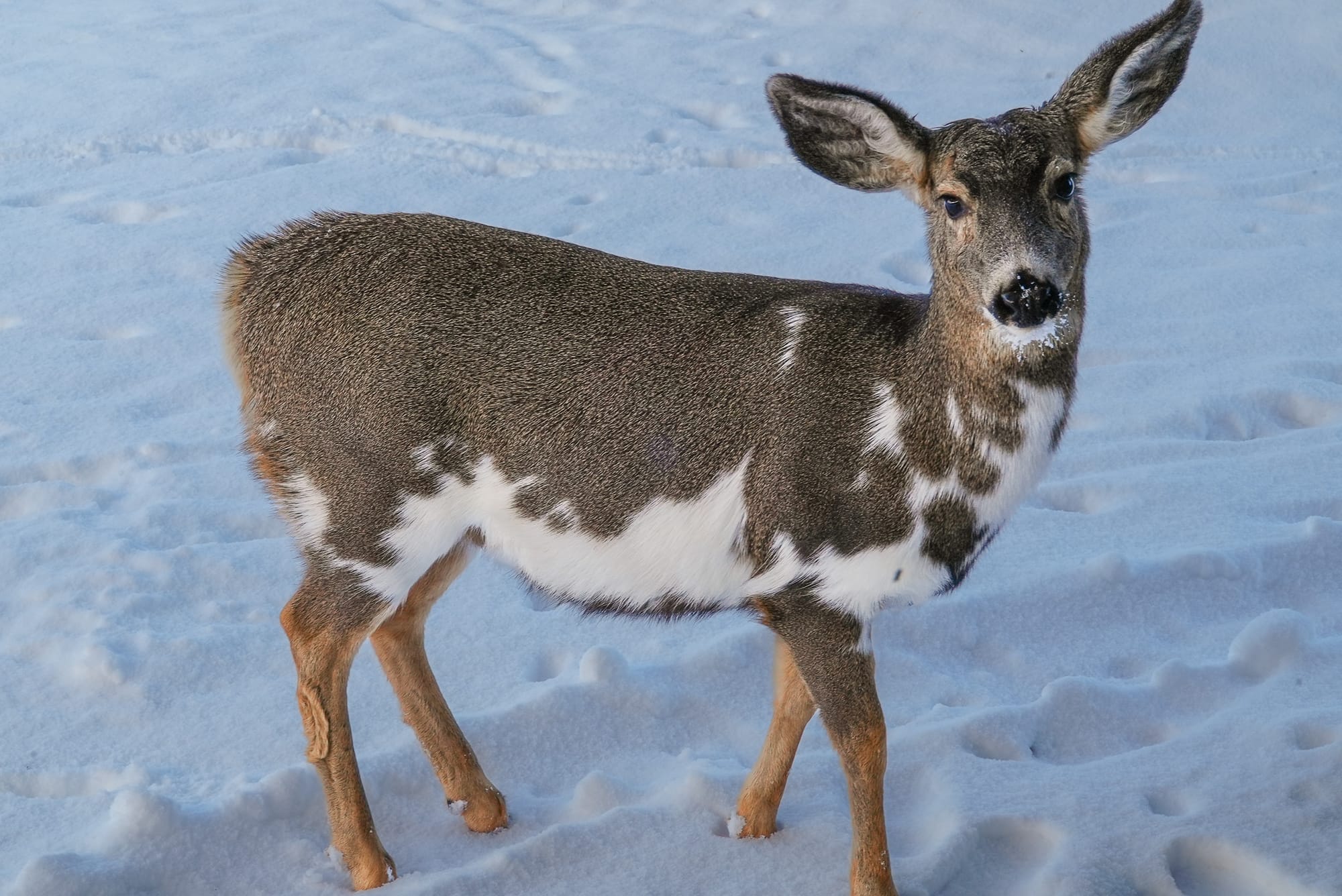
What happens is that a deer's rumen is so full of microbes that they constantly spill over into the deer's stomach, and here in the stomach the microbes are digested. Essentially, a deer swallows lots of leaves to feed the microbes in its rumen, then its own actual meal comes from eating microbes!


I'm writing about this topic this week because something else happens in the winter. When there are no green leaves and buds for deer to eat, and everything is covered in snow, a deer resorts to swallowing the only thing they can find—bare woody twigs and stems. These types of plant tissues are much, much harder to break down and require a very different set of gut microbes.
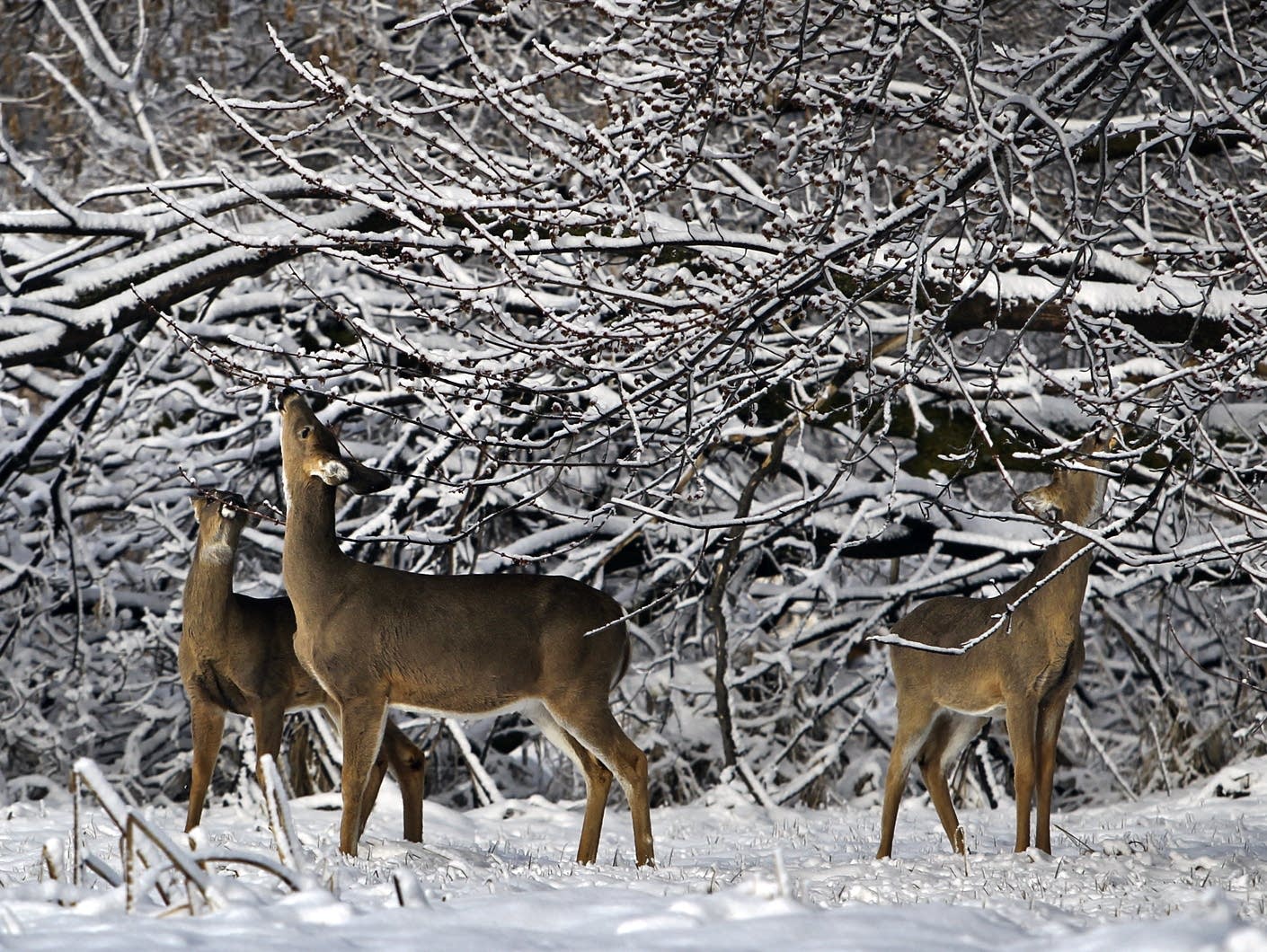
A deer and its gut microbiome can slowly adjust to these winter conditions, but it requires that a deer keeps eating the woody stems that these microbes specialize in eating. Under these conditions a deer cannot (and should not) be fed handouts like kitchen scraps, bread, or fruit that well-meaning people offer them. Digesting those items requires a different (summer-only) set of microbes, and a deer can actually starve to death if its stomach has been filled with items it can't digest.

Member discussion